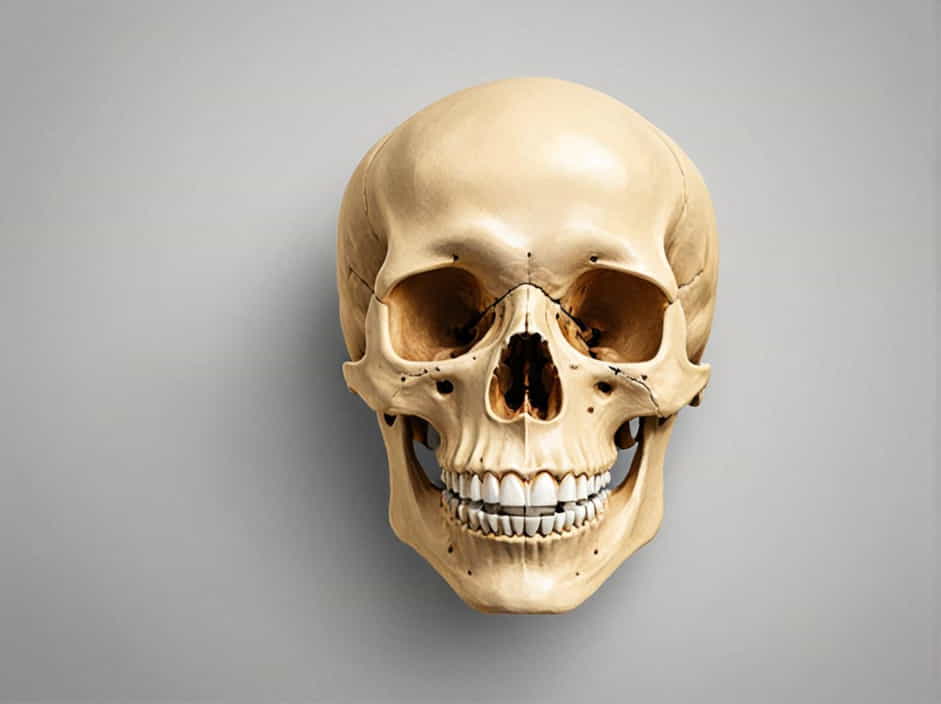The human skull is made up of 22 bones, with the facial bones playing a crucial role in structure, function, and appearance. Among these, the maxilla is often thought to be the largest and strongest facial bone. However, is this statement accurate? While the maxilla is the largest immovable facial bone, the mandible (lower jaw) is actually the strongest.
This topic explores the anatomy, functions, and importance of the maxilla, comparing it with the mandible and its role in the human body.
Understanding the Maxilla: Anatomy and Structure
The maxilla is a paired bone that fuses in the midline to form the upper jaw. It provides support for the upper teeth, forms part of the nasal cavity, and contributes to the orbital structure of the eyes.
1. Location of the Maxilla
- The maxilla is centrally located in the skull.
- It connects with several other bones, including the nasal, zygomatic (cheek), lacrimal, palatine, and frontal bones.
- Unlike the mandible, the maxilla is fixed and does not move.
2. Structural Components of the Maxilla
The maxilla consists of several key parts, each contributing to its functions:
- Body of the Maxilla: The main bulk of the bone, forming the upper jaw.
- Alveolar Process: Houses the upper teeth.
- Palatine Process: Forms the hard palate (roof of the mouth).
- Frontal Process: Connects with the frontal bone, contributing to the eye socket.
- Zygomatic Process: Joins the zygomatic bone (cheekbone), providing facial structure.
Functions of the Maxilla
The maxilla plays a crucial role in various functions of the skull and face. Some of its primary functions include:
1. Supporting the Upper Teeth
The alveolar process of the maxilla holds the upper row of teeth, providing support for chewing and speaking. The stability of the maxilla ensures that teeth remain aligned and function properly.
2. Forming the Roof of the Mouth
The palatine process of the maxilla creates the hard palate, separating the oral and nasal cavities. This is essential for:
- Proper chewing and swallowing.
- Clear speech production.
- Preventing food from entering the nasal passage.
3. Contributing to the Structure of the Face
The maxilla is one of the most important bones for facial aesthetics. It determines the midface shape, cheekbone prominence, and nasal structure. Facial symmetry largely depends on a well-developed maxilla.
4. Playing a Role in Breathing
The maxilla supports the nasal cavity, which is essential for breathing and filtering air. Any abnormalities in maxillary development can lead to nasal obstruction or breathing difficulties.
5. Providing Attachment for Muscles
Various facial muscles attach to the maxilla, including those responsible for chewing, smiling, and facial expressions.
Is the Maxilla the Strongest Bone in the Face?
While the maxilla is the largest immovable facial bone, it is not the strongest. The mandible (lower jaw) is the strongest bone in the face due to its density and ability to withstand force.
Comparison: Maxilla vs. Mandible
| Feature | Maxilla | Mandible |
|---|---|---|
| Size | Largest immovable facial bone | Largest and strongest facial bone |
| Movement | Fixed in place | Movable (forms the lower jaw) |
| Function | Supports upper teeth, forms nasal cavity | Supports lower teeth, enables chewing |
| Strength | Strong but less dense | Strongest facial bone |
| Jaw Function | Passive role in chewing | Active role in chewing and speaking |
The mandible’s ability to move and its thick bone structure make it the strongest facial bone. It absorbs significant force during chewing and impact.
Common Maxillary Disorders and Conditions
Several conditions can affect the maxilla, impacting facial structure, breathing, and oral function. Some of these include:
1. Maxillary Fractures
Injuries from falls, accidents, or trauma can fracture the maxilla, leading to:
- Facial swelling and pain.
- Difficulty chewing or speaking.
- Misalignment of the upper teeth.
2. Cleft Palate and Cleft Lip
A congenital condition where the palatine process fails to fuse, leading to an opening in the roof of the mouth. It can cause:
- Feeding difficulties in infants.
- Speech problems.
- Increased risk of infections.
3. Sinus Infections (Sinusitis)
The maxilla houses the maxillary sinuses, which can become infected due to colds or allergies, causing:
- Facial pain and pressure.
- Nasal congestion.
- Headaches and difficulty breathing.
4. Maxillary Hypoplasia
A condition where the maxilla is underdeveloped, leading to:
- Sunken midface appearance.
- Dental misalignment.
- Breathing problems.
5. Temporomandibular Joint (TMJ) Disorders
Although TMJ primarily affects the mandible, maxillary misalignment can contribute to:
- Jaw pain and clicking sounds.
- Difficulty opening and closing the mouth.
- Frequent headaches.
How to Maintain a Healthy Maxilla
Keeping the maxilla and facial bones healthy is essential for oral function, appearance, and overall well-being. Here are some tips:
1. Practice Good Oral Hygiene
- Brush and floss daily to prevent tooth decay in the maxilla.
- Visit a dentist regularly for check-ups and cleanings.
2. Protect the Face from Injury
- Wear a helmet or mouthguard during sports activities.
- Avoid high-impact trauma to the face.
3. Maintain a Balanced Diet
- Eat foods rich in calcium and vitamin D for strong bones.
- Avoid excessive sugar to prevent tooth decay.
4. Seek Medical Attention for Facial Pain or Misalignment
- If you experience facial pain, breathing problems, or difficulty chewing, consult a doctor.
- Early diagnosis of maxillary disorders ensures effective treatment.
The maxilla is a vital bone in the human skull, providing structure to the face, supporting the upper teeth, and playing a role in breathing and speech. However, while the maxilla is the largest immovable facial bone, it is not the strongest—that title belongs to the mandible.
Maintaining maxillary health through good oral hygiene, protection from injury, and regular medical check-ups ensures strong facial structure and proper function. Understanding the importance of the maxilla helps in preventing common disorders and maintaining a healthy, functional, and aesthetically balanced face.
